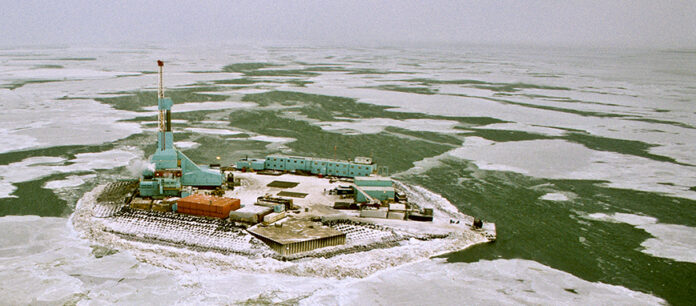Hess Corporation shareholders approved the company’s acquisition by Chevron for $53 billion.
Hess was the company that drilled the first wildcat well on Alaska’s at Prudhoe Bay. Last year, Chevron shareholders voted to approve the acquisition, which has been underway ever since.
It’s the second major movement between oil companies this week. ConocoPhillips announced Wednesday it is acquiring Marathon Oil.
At the special meeting of Hess stockholders held Tuesday, a majority of the Hess common stock were voted in favor of the adoption of the merger agreement, Hess said in a statement. News of the merger is dampened by an ongoing legal dispute with Exxon Mobil, which could still kill the deal.
“We are very pleased that the majority of our stockholders recognize the compelling value of this strategic transaction and look forward to the successful completion of our merger with Chevron,” CEO John Hess said. “Together we will be positioned as a premier integrated energy company, with the leadership, asset portfolio and financial resources to deliver significant shareholder value for years to come.”
No further approval of Chevron stockholders is required in connection with the merger. Completion of the merger remains subject to other closing conditions, including resolution of ongoing arbitration regarding rights in the Stabroek Block joint operating agreement Hess has with Exxon Mobil, the company said.
If Exxon prevails in that dispute and the Chevron-Hess deal falls apart, Hess would keep its stake in the Stabroek Block in Guyana, which is an Exxon-owned project.
In an interview with Financial Times, last year, CEO Hess said the time was right to sell: “Our company is 90 years old — an anniversary we’re celebrating this year — and it all started with my father driving a second-hand truck delivering fuel oil during the Depression.”
During the time Hess was prominent in Alaska, it was known as Amerada Hess, after a merger with Amerada Petroleum Corp. in 1969. By May of 1970, Amerada Hess drilled the first successful wildcat well in Prudhoe Bay on Alaska’s North Slope.
The next year, Amerada Hess was one of several oil companies invited by the Canadian government to work on building pipelines from the North Slope through Canada to the United States. That never came to fruition due to the permitting of the Trans Alaska Pipeline System.
Hess continued working in Alaska and in 1974 was the first company to apply for permits to unload supertankers from the Trans-Alaska Pipeline.
In the 1980s, the State of Alaska sued 17 oil companies for underpayment of oil production royalties. The case was named after Amerada Hess, because it was the first company in the alphabetical list of all the defendants. The oil companies eventually settled in 1997 in Alaska v. Amerada Hess et al. after 15 years of court proceedings; the settlement was about $600 million out of the $902 million that the State of Alaska said was due.
By 1986, Amerada Hess reported it had discovered oil about five miles west of Seal Island in the Beaufort Sea, in a joint venture with Shell Western Exploration Production Inc., Amoco, Texas Eastern, and Murphy. The Seal Island project was the world’s first artificial manmade island in the Arctic to yield commercial quantities of oil and gas.
Mergers and acquisitions typical of the industry also mark the history of Hess, which acquired Monsanto Oil Company and Triton.
The company began focusing elsewhere and its business model changed over time. It sold off its retail locations, and spun off some of its operations around the globe. In 2003, Hess sold its 1.5 percent stake in the Trans-Alaska pipeline system to ConocoPhillips.
Currently, Hess is focused on oil in North Dakota, the Gulf of Mexico, and overseas, including Guyana and Malaysia.
The sale of Hess to Chevron, and the acquisition of Marathon by ConocoPhillips comes after last year’s acquisition of Pioneer Natural Resources by Exxon for roughly $60 billion. Pioneer had made discoveries in the offshore Oooguruk field, west of Prudhoe Bay and in 2008, became the first independent operator to produce oil on the North Slope. It divested its Alaska operations to Caelus Energy in 2013 and exited Alaska for better prospects in the Permian Basin.

I’m curious why they are looking to acquire assets in an industry marketed for destruction by Grandpa Bloodstains.
Because time is on their side. They think in terms of decades and centuries. Like China. You can’t always think small.
They’re thinking that Old Yeller might be on his way out the door. And planning for the boom that might happen after
The oil industry is making $$Billions in excess profits off of Biden’s supposed anti-oil agenda.
Regardless of how technically advanced alternative energy technology becomes, the concentration and portability of fossil energy exceeds it dramatically to this day. Only nuclear, hydro, and geothermal (where accessible) can compete with fossil energy. When leftists finally realize how comparatively infeasible alternative energy ideas are, fossil energy will be in greater demand than ever.
Heck the environmental nazis are against hydro, against nuclear, against wind mills. I think it would be awesome to just shut the power down from Dec to March this coming winter. See what’s left of the general public thinks after that. Little mind clearing time in winter shall we say.